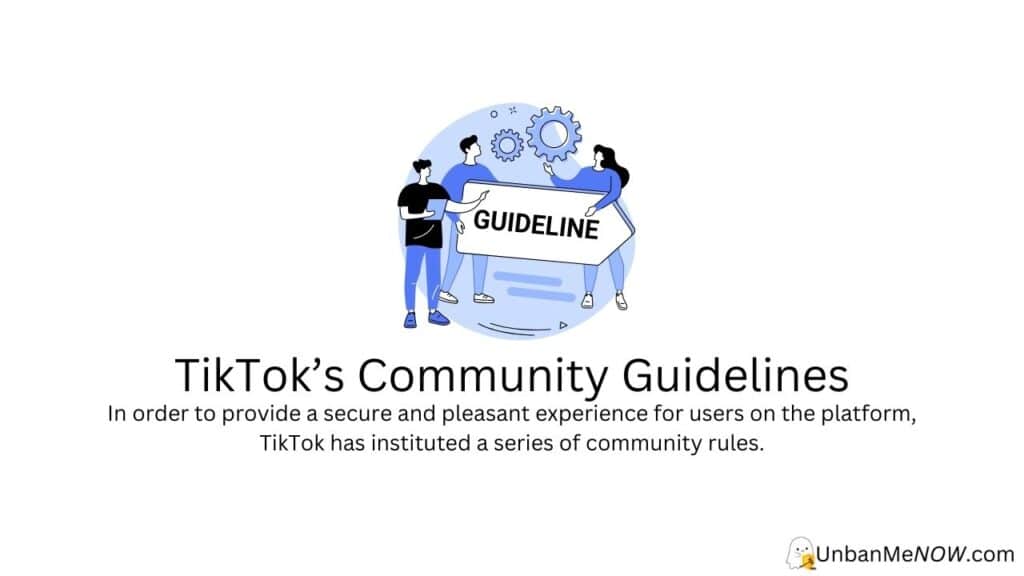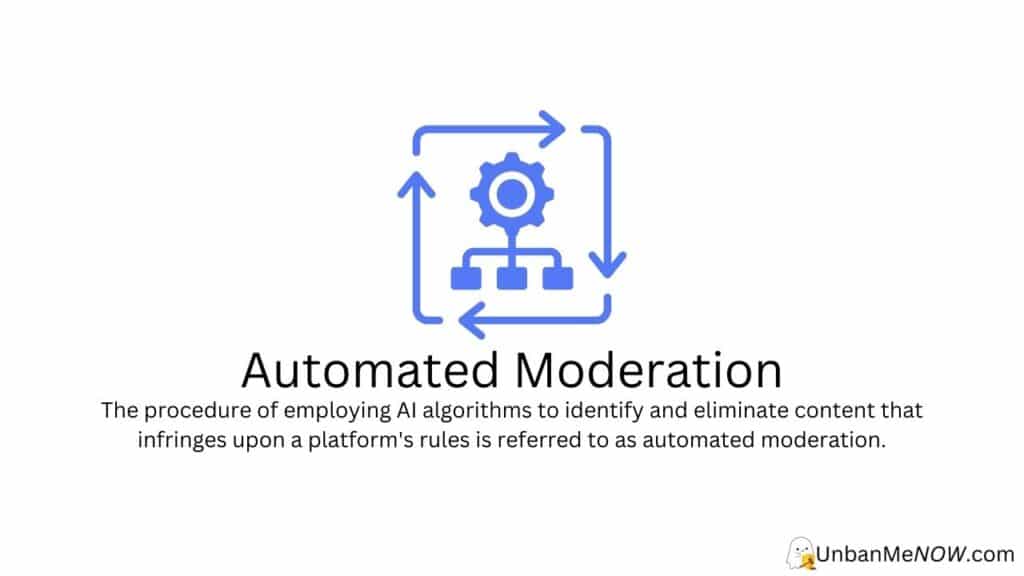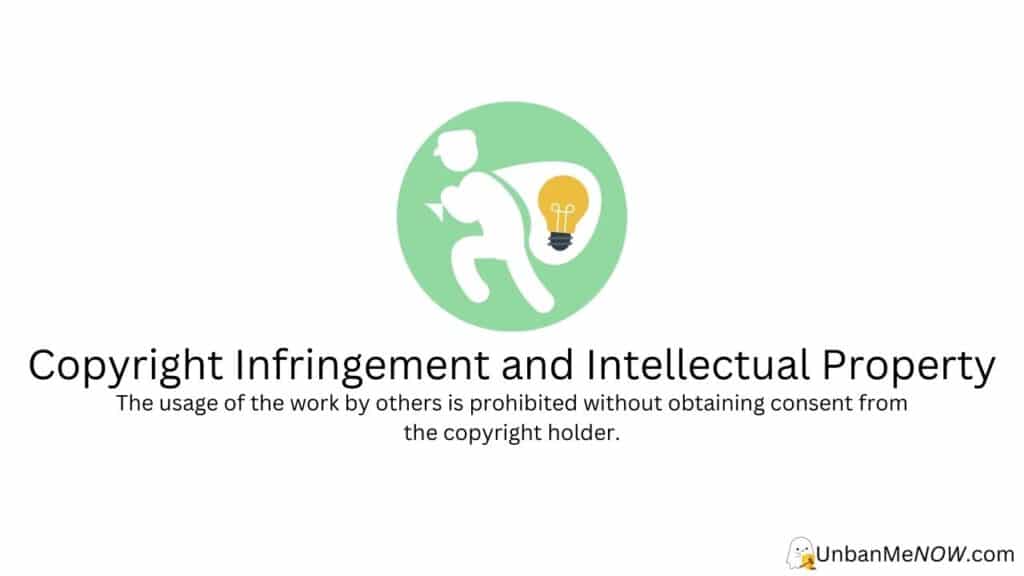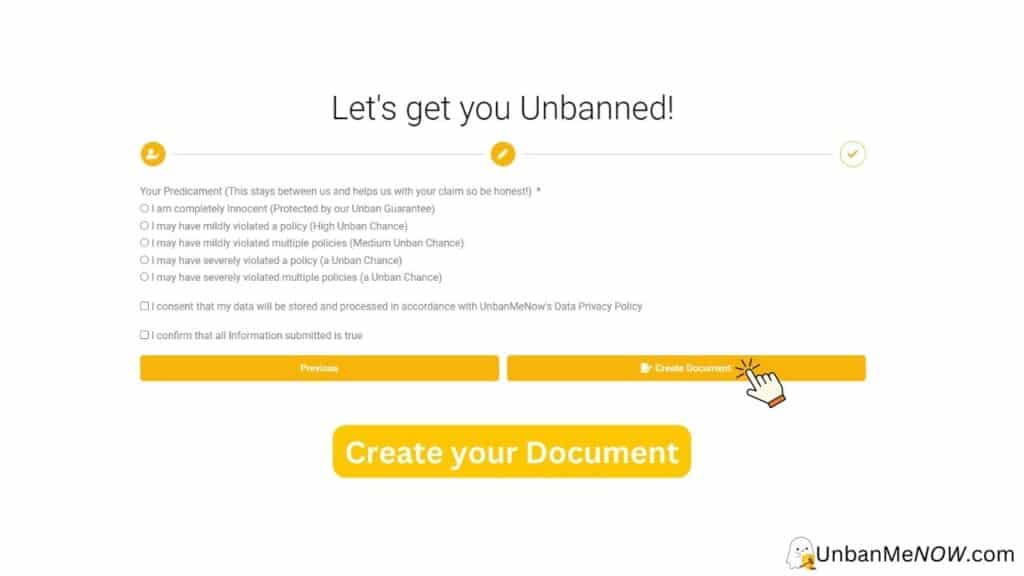With millions of users posting short videos on the app, TikTok is a social media platform that has swept the globe. This platform has gained a lot of traction recently, particularly with younger generations. But given its rising popularity, it is critical to comprehend how TikTok handles account banning.
Understanding the reasons behind the TikTok account ban is critical because it is a key component of TikTok’s regulations. It is crucial for users to know their rights as users and to make sure they do not break any of TikTok’s rules.
This blog post’s objective is to give a thorough description of the TikTok account-banning procedure. We will examine the causes of account bans, the procedure for account bans, and the precautions users can take to avoid account bans. We will also go through user rights and what they can do if their account has been wrongfully banned.
TikTok’s Community Guidelines
TikTok is a social media platform that allows users to create and share short-form videos. The platform is widely popular and is used by millions of people all over the world. To ensure that users have a safe and enjoyable experience on the platform, TikTok has established a set of community guidelines that outline what kind of content is acceptable and what is not.

The community guidelines are designed to promote a positive, creative, and respectful community on TikTok. They cover a wide range of topics, including hate speech, spam, bullying, and adult content. TikTok has a zero-tolerance policy when it comes to content that violates these guidelines, and any user who is found to be in violation of them may face consequences ranging from a warning to a permanent ban.
Most Common Violations
Some of the most common violations of TikTok’s community guidelines include:
- Hate speech: TikTok does not tolerate hate speech or any form of hate-based content. This includes content that promotes violence, discrimination, or hate towards individuals or groups based on their race, ethnicity, national origin, religion, gender identity, sexual orientation, age, or disability.
- Spam: TikTok’s guidelines prohibit the use of spammy or misleading content, such as fake giveaways, fake news, or false information.
- Bullying: TikTok does not allow content that promotes bullying, harassment, or cyberbullying. This includes content that humiliates, threatens, or intimidates another user.
- Adult content: TikTok’s guidelines prohibit the posting of explicit or adult content, such as pornography, sexual content, or violent content.
- Violations of intellectual property rights: TikTok’s guidelines prohibit the use of content that infringes on the intellectual property rights of others, such as copyrighted material or trademarked logos.
Grey Areas and Ambiguous Content

While TikTok’s community guidelines provide clear guidelines for what kind of content is acceptable, there are still some grey areas and ambiguous content that can be difficult to define. Some examples of this include:
- Political speech: TikTok’s guidelines prohibit hate speech and bullying, but it can be difficult to determine what constitutes political speech and what constitutes hate speech. For example, political content that criticizes a particular political figure or policy may be considered hate speech by some users, while others may view it as protected free speech.
- Humor: TikTok’s guidelines prohibit bullying and hate speech, but it can be difficult to determine what constitutes humor and what constitutes hate speech. For example, a joke that pokes fun at a particular race or ethnicity may be considered humorous by some users, while others may view it as hate speech.
- Nudity: TikTok’s guidelines prohibit adult content, but it can be difficult to determine what constitutes nudity and what constitutes art. For example, a photo of a classical statue that depicts nudity may be considered art by some users, while others may view it as inappropriate.
In these and other similar cases, TikTok relies on its users to report content that they believe violates the community guidelines, and the platform’s moderation team will then review the content and make a determination as to whether or not it violates the guidelines. If a user disagrees with TikTok’s determination, they have the option to appeal the decision.
TikTok’s Account Suspension and Banning Process

To maintain a safe and positive user experience, TikTok has implemented various measures to detect and prevent violations of its community guidelines. These measures include both automated moderation and manual review processes.
How TikTok Detects Violations
TikTok uses various tools and techniques to detect violations of its community guidelines, including:
- User reports: TikTok allows users to report content that they believe violates the platform’s guidelines. This helps TikTok identify problematic content and take appropriate action.
- Image and video analysis: TikTok uses advanced image and video analysis algorithms to identify content that may violate its guidelines. For example, the platform may use computer vision to detect images or videos that contain nudity or other explicit content.
- Text analysis: TikTok uses natural language processing algorithms to analyze the text in captions and comments, identifying potentially harmful or inappropriate content.
Automated Moderation

Automated moderation is the process of using artificial intelligence algorithms to detect and remove content that violates the platform’s guidelines. This approach has several advantages, including speed and efficiency, as well as the ability to process large amounts of content in real time. However, AI-driven moderation is not perfect, and there are several limitations to consider.
One of the main limitations of AI-driven moderation is the risk of false positives. This occurs when the algorithm flags content as violating the guidelines, even though it does not actually do so. For example, the algorithm may flag an image or video that contains content that is not actually harmful, such as a picture of a person in a swimsuit.
Another limitation of AI-driven moderation is that it may not be able to fully understand the context of a piece of content. For example, a video that contains explicit language may be flagged as inappropriate, even if it is part of a comedic skit.
Instances of False Positives
False positives are a common issue with AI-driven moderation, and they can have serious consequences for users. For example, a user may have their account suspended or banned due to a false positive, even though they did not actually violate the platform’s guidelines. This can be a frustrating and time-consuming experience, and it may also result in a loss of followers and engagement.
Manual Review Process
To mitigate the risk of false positives and ensure that content is evaluated in context, TikTok also employs human reviewers to manually review flagged content. These reviewers are responsible for making final decisions about whether or not a piece of content violates the platform’s guidelines. They also play a critical role in ensuring that the platform’s community guidelines are applied consistently and fairly.
Subjectivity and Inconsistency in Decision-Making
However, manual review is not without its limitations, including subjectivity and inconsistency in decision-making. Human reviewers may interpret the platform’s community guidelines differently, and this can result in inconsistent decisions about what content is considered inappropriate. This subjectivity and inconsistency can be a source of frustration for users, and it may also result in a lack of trust in the platform’s moderation process.
Copyright Infringement and Intellectual Property

Copyright infringement is the unauthorized use of another person’s work, which is protected by copyright laws. Copyright laws are designed to protect the rights of creators and owners of original works, such as music, literature, software, and images, and to prevent others from using or copying those works without permission.
Intellectual property refers to the intangible creations of the human mind, such as inventions, literary and artistic works, symbols, names, images, and designs used in commerce. Copyright law is one of the ways in which intellectual property is protected. Copyright law gives the creator or owner of a work the exclusive right to control its use, distribution, and reproduction. This means that others cannot use the work without the permission of the copyright owner.
How TikTok Enforces Copyright Rules
TikTok is a popular video-sharing platform where users can upload, share, and view short-form videos. TikTok has strict rules in place to enforce copyright laws and prevent copyright infringement on its platform.
One of the ways TikTok enforces copyright rules is through its Digital Millennium Copyright Act (DMCA) policy. The DMCA provides a process for copyright owners to report instances of infringement to the platform, and for TikTok to remove infringing content. TikTok also uses automated systems to detect and remove infringing content.
TikTok also has a feature that allows users to report infringing content directly from the platform. If a user reports infringing content, TikTok will review the complaint and take appropriate action, such as removing the infringing content or disabling the infringing user’s account.
Common Reasons for Copyright Infringement

There are many reasons why copyright infringement occurs, including:
- Ignorance of copyright laws: Some people may not be aware of the copyright laws or believe that they can use someone else’s work without permission.
- Misinterpretation of “fair use”: Some people may believe that using small portions of someone else’s work for the purpose of commentary, criticism, or education is allowed under the “fair use” doctrine. However, the fair use doctrine is complex and has many limitations.
- Difficulty in identifying the copyright owner: In some cases, it may be difficult to determine who the copyright owner is, which can make it challenging to obtain permission to use a work.
- The desire to save time or money: Some people may choose to use someone else’s work without permission because it is quicker or less expensive than creating their own original work.
Unintentional Violations and Their Consequences
Not all copyright infringement is intentional. In some cases, people may use someone else’s work without realizing that it is protected by copyright laws.
However, regardless of whether the infringement was intentional or unintentional, the consequences can be severe. The copyright owner may sue for damages, including monetary compensation for the unauthorized use of the work. In some cases, the copyright owner may also seek an injunction to prevent further use of the work.
Additionally, the infringing party may be required to pay legal fees and costs, which can be substantial. In some cases, the infringing party may also be subject to criminal penalties, such as fines or imprisonment.
Misunderstandings and Misinterpretations

Let’s explore some of the misunderstandings and misinterpretations that have arisen in the wake of the TikTok ban, including cultural differences and context, language barriers and translation issues, and satire, parody, and humor misinterpretations.
Cultural Differences and Context
One of the biggest sources of misunderstandings and misinterpretations surrounding the TikTok ban is cultural differences and context. TikTok is used by a global community, and what might be considered humorous or acceptable in one country may not be in another. This can lead to videos being misinterpreted or taken out of context when viewed by a different cultural audience.
For example, a video that is meant to be light-hearted and humorous in one country may be considered offensive or inappropriate in another, leading to a misinterpretation of the content and the motivations behind it. Additionally, cultural differences can also impact the way that the platform is used and the types of content that are popular. In some countries, TikTok is primarily used for entertainment and leisure, while in others it may have a more serious or educational purpose.
Language Barriers and Translation Issues
Another significant source of misunderstandings and misinterpretations on TikTok is language barriers and translation issues. TikTok is a global platform, and many of its users speak different languages, leading to translation issues when videos are translated into other languages. This can result in videos being misinterpreted or taken out of context, leading to confusion and controversy.
For example, a video that is meant to be satirical or humorous in one language may not translate well into another, leading to a misinterpretation of the content and the motivations behind it. Additionally, language barriers can also impact the way that the platform is used, with users in different countries using different slang terms or expressions that may not be familiar to users in other countries.
Satire, Parody, and Humor Misinterpretations
Satire, parody, and humor are common forms of expression on TikTok, and these types of videos can often be misinterpreted or taken out of context. This can lead to confusion and controversy, especially when viewers are unfamiliar with the genre or the cultural context of the video.
For example, a satirical video that is meant to be a parody of a political figure or event may be misinterpreted as an endorsement or attack, leading to confusion and controversy. Additionally, humor can often be culturally specific, and what might be considered funny in one country may not be in another, leading to misunderstandings and misinterpretations of the content and the motivations behind it.
Get Rid of the TikTok Ban using UnbanMeNow
With the help of UnbanMeNow, fixing the TikTok ban has never been easier. Follow these steps to get your account unbanned:
Choose the TikTok Platform: To get started, visit the UnbanMeNow website and select TikTok from the list of platforms. This will take you to the next step where you can begin the process of unbanning your account. Simply click the “Unban Me Now!” button to proceed.

Give Some Personal Details: In order for UnbanMeNow to find your account and diagnose the issue, you will be asked to provide some basic information. This includes your full legal name, email address, and platform username. Make sure that the information you provide is linked to your TikTok account. Once you have entered the information, click “Next” to continue.

Give More Information About Your Ban: To help UnbanMeNow understand your situation, you will need to provide more information about why you were banned. Try to be as detailed as possible and include any relevant information about what happened. Explain why you think you were banned and what steps you have taken to resolve the issue.

Choose Your Predicament: UnbanMeNow offers a range of different predicament options that you can choose from. Select the one that best fits your situation. This will help UnbanMeNow create a document that is tailored to your specific needs. After you have made your selection, you will need to agree to the Data Privacy Policy by checking the relevant boxes. Confirm that all of the information you have provided is accurate and click the “Create Document” button.

Unban from TikTok Ban: The final step is to download the document and submit it to TikTok. Simply click the “Download Document” button and follow the instructions to send the document to the platform. UnbanMeNow promises that your ban will be lifted within a few hours of submitting the document. All you need to do now is wait for the process to be completed.

Final Words
TikTok bans accounts for various reasons, some of which may not seem fair to the affected users. However, it’s important to understand that TikTok has community guidelines and terms of service in place to ensure a safe and positive experience for all users. This may result in the ban of accounts that violate these guidelines, such as those involved in spam, hate speech, or other malicious activities. Additionally, TikTok may also ban accounts due to technical issues, mistakes, or errors. Ultimately, it’s always best to review TikTok’s community guidelines and terms of service to avoid any potential issues that could result in account banning.
Frequently Asked Questions
TikTok, the popular short-video-sharing platform, has recently come under fire for banning user accounts without any apparent reason. Many users have reached out to us with concerns and questions about this issue. Here are some of the most common questions we have received:
How can I find out if my TikTok account has been banned?
To find out if your TikTok account has been banned, you can try logging into the app. If you are unable to log in and receive an error message stating that your account has been banned, then your account has likely been banned.
Is there a way to appeal a TikTok account ban?
As for appealing a TikTok account ban, TikTok does provide a way to appeal the ban. You can contact TikTok through the app or through their support website and explain the situation. TikTok will review your appeal and determine if they will lift the ban.
Are TikTok account bans permanent or can they be lifted?
TikTok account bans can be either permanent or temporary, depending on the nature and severity of the violation. In some cases, TikTok may lift a temporary ban after a certain period of time has passed or after the user has taken steps to rectify the issue that led to the ban. However, in other cases, TikTok may make the ban permanent. Ultimately, the decision to lift a ban is at the discretion of TikTok and may vary based on the individual circumstances of each case.
